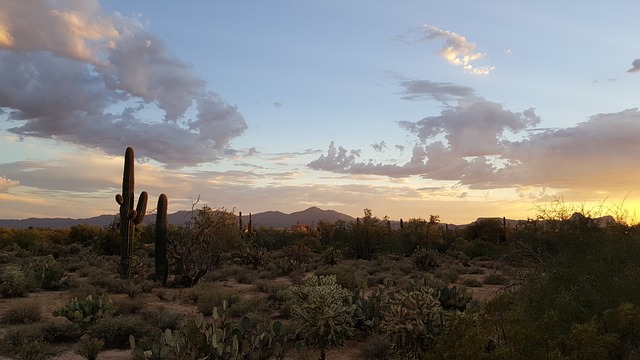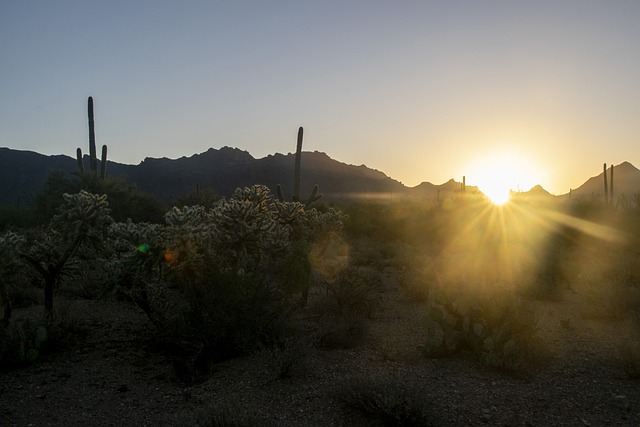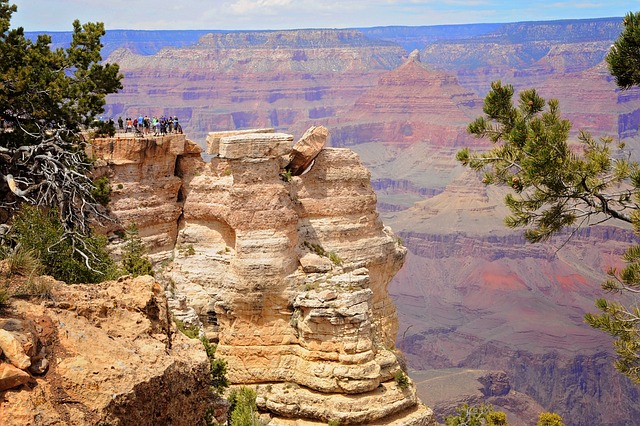Exploring Tucson reveals a rich tapestry of cultural influences from its indigenous roots through Spanish colonization to its place within the American West. Historical sites like Mission San Xavier del Bac and the Arizona State Museum offer profound insights into Southern Arizona's complex heritage, with attractions that include fused indigenous and Spanish mission styles, extensive prehistory collections, and platforms for both local and international art. Tucson travel tips emphasize visiting these landmarks to understand the city's vibrant present through its past, with guided or independent exploration options available. Key historical sites such as Tumamoc Hill provide an archaeological window into the Hohokam people's ancient presence and the adaptations by subsequent inhabitants, while the San Xavier del Bac Mission stands as a National Historic Landmark showcasing Spanish Colonial architecture. Tucson's museums, including the Arizona State Museum, Museum of Contemporary Art, and Pima Air & Space Museum, offer diverse experiences ranging from indigenous artifacts to contemporary works addressing cultural identity and societal issues, all set against the backdrop of Tucson's unique desert landscape. Practical Tucson travel tips advise visitors to plan their museum visits for less crowded times and to take advantage of interactive exhibits that allow a hands-on approach to learning about Tucson's storied history, artistry, and contributions to science and space exploration.
Embark on a journey through time with our comprehensive guide to Tucson’s historical sites and museums, offering an enriched understanding of the region’s diverse cultural tapestry. From the early Native American settlements to the Spanish colonial era and beyond, Tucson Travel Tips reveal the city’s storied past. Dive into the rich heritage of the Sonoran Desert with our curated list of top historical sites, and delve deeper into Tucson’s cultural and natural history through its acclaimed exhibits. Join us as we explore the layers of history that make Tucson a unique destination for history enthusiasts and curious minds alike.
- Unearthing Tucson's Past: A Guide to Historical Sites and Museums for Enhanced Insight into the Region
- Top Historical Sites in Tucson: Uncovering the Rich Heritage of the Sonoran Desert
- Museum Masterpieces: Exploring Tucson's Cultural and Natural History Through Its World-Class Exhibits
Unearthing Tucson's Past: A Guide to Historical Sites and Museums for Enhanced Insight into the Region

Embarking on a journey through Tucson’s rich history offers travelers a unique perspective on the region’s multifaceted past. To fully appreciate the layers of culture and heritage that make up this diverse area, visitors should consider exploring a selection of historical sites and museums. These curated destinations not only preserve but also illuminate the stories and artifacts that define Tucson’s legacy. From ancient indigenous settlements to Spanish colonial influences and the pivotal role Tucson played in the American West, each site is a window into the complex tapestry of Southern Arizona’s history.
For those seeking to unearth Tucson’s past, the region boasts several key attractions. The preservation of Mission San Xavier del Bac stands as a testament to the blending of Spanish mission architecture with indigenous cultures. Similarly, the Arizona State Museum offers an extensive collection of artifacts that trace the prehistory and early history of the area’s inhabitants. History enthusiasts will also find value in the Tucson Museum of Art, which showcases local artists alongside a diverse range of international works. Tucson travel tips often highlight the importance of these cultural touchstones, encouraging visitors to delve into the region’s heritage for an enriched understanding of its current vibrancy. Whether it’s through guided tours or self-led exploration, immersing oneself in Tucson’s historical sites and museums is a journey into the heart of its storied past.
Top Historical Sites in Tucson: Uncovering the Rich Heritage of the Sonoran Desert

Exploring the top historical sites in Tucson offers a window into the captivating heritage of the Sonoran Desert region. One of the most significant landmarks, the Tumamoc Hill, stands as both an archaeological treasure and a living laboratory, reflecting centuries of indigenous habitation and scientific research. Visitors can traverse the well-preserved trails to gain insights into the lives of the ancient Hohokam people and the adaptive strategies of subsequent inhabitants. Tucson travel tips advise newcomers to carry ample water and sun protection while exploring this historic site, as the desert climate can be unforgiving.
Another pivotal historical site is the preserved San Xavier del Bac Mission, a National Historic Landmark that showcases the blending of Spanish Colonial and Moorish architectural styles. This mission, with its iconic bell tower and intricate murals, offers a glimpse into the region’s early Spanish influence and the enduring cultural traditions of the Tohono O’odham Nation. Travelers are encouraged to explore the mission’s interior to appreciate its architectural grandeur and the fine details of its religious artistry. Both Tumamoc Hill and San Xavier del Bac Mission are emblematic of Tucson’s rich tapestry of history, making them essential stops for anyone interested in the area’s past and a must-visit as per Tucson travel tips.
Museum Masterpieces: Exploring Tucson's Cultural and Natural History Through Its World-Class Exhibits

Embarking on a cultural odyssey in Tucson, Arizona offers a window into the region’s rich tapestry of history and natural wonders. The city’s museums stand as repositories of knowledge, showcasing the area’s heritage through an array of world-class exhibits. Visitors can delve into the past at the Arizona State Museum, where extensive collections detail the prehistory of the Southwest, including the Anasazi and Hohokam cultures. Here, Tucson travel tips often suggest starting with the museum’s impressive Plaza de las Culture display, which juxtaposes the region’s indigenous artifacts with those from far-flung corners of the world, highlighting universal themes in human creativity. The Museum of Contemporary Art offers a contemporary lens on cultural identity and societal issues, presenting works by artists who draw inspiration from the Sonoran Desert’s unique environment. Meanwhile, the Pima Air & Space Museum transports visitors to an era of aviation and space exploration, with its collection of aircraft and spacecraft that offer a panoramic view of human innovation. Tucson’s museums are not just places to be seen; they are interactive experiences where travelers can engage directly with history, art, and science, making the city a must-visit destination for those seeking a deeper understanding of the American Southwest. When planning your visit, consider local insights on the best times to explore each venue to maximize your experience, as Tucson travel tips often recommend timed entries to avoid crowds and ensure personal space within these popular attractions.
exploration of Tucson’s past reveals a mosaic of histories that intertwine the indigenous cultures, Spanish colonial influence, and American frontier settlement. By visiting the historical sites and museums highlighted in this article, travelers gain a nuanced understanding of the region’s multifaceted heritage. Whether wandering through the galleries of Tucson’s museums or strolling the grounds of its ancient landmarks, visitors are encouraged to follow these Tucson travel tips: plan ahead for accessibility, respect all sites as active hubs of cultural preservation, and engage with local historians and guides. These experiences promise not only a deeper appreciation for Tucson’s storied past but also enrich the present-day journey through this vibrant city.
